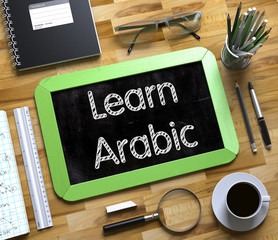Modern Arabic is an uncommon language because it is characterized by what is called diglossia. This means that modern Arabic is really almost two languages: Modern Standard Arabic and colloquial Arabic. Modern Standard Arabic is used in reading, writing, and high register speech. However, Modern Standard Arabic is a learned language. It is no one’s mother tongue. In fact, all Arabs grow up learning the second or colloquial language. Arabic is descended from a language known in the literature as Proto-Semitic. This relationship places Arabic firmly in the Afro-Asiatic group of world languages. Going further into the relationship between Arabic and the other Semitic languages, Modern Arabic is considered to be part of the Arabo-Canaanite sub-branch of the central group of the Western Semitic languages.
The rise of the Arabic Language to the status of a major world language is inextricably intertwined with the rise of Islam as a major world religion. Before the appearance of Islam, Arabic was a minor member of the southern branch of the Semitic language family, used by a small number of largely nomadic tribes in the Arabian peninsula, with an extremely poorly documented textual history. Within a hundred years after the death (in 632 C.E.) of Prophet Muhammad (pbuh), the Prophet entrusted by God to deliver the Islamic message, Arabic had become the official language of a world empire whose boundaries stretched from the Oxus River in Central Asia to the Atlantic Ocean, and had even moved northward into the Liberian Peninsula of Europe. In this blog, we’ll discuss some of the reasons why Arabic will help you in future




